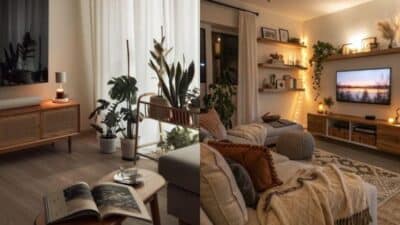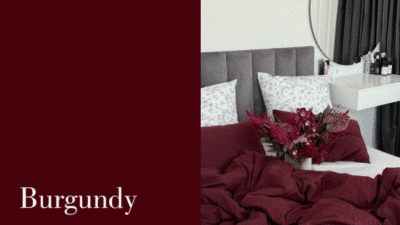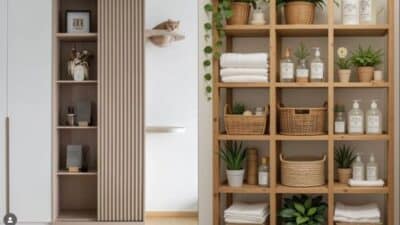Ever walked into a room and felt an instant shift in its vibe? Often, that magic touch comes from something surprisingly simple, yet profoundly impactful: decorative mirrors. These aren’t just practical tools for checking your outfit; they are powerful design elements, capable of transforming mundane spaces into captivating statements. From bouncing light around a dim corner to creating an illusion of grandeur in a small room, decorative mirrors are truly unsung heroes of interior design.
Think about it. A thoughtfully placed mirror can do more than just reflect your image; it reflects your personality, amplifies your style, and quite literally expands your living space. It’s an art piece, a functional object, and a clever design hack all rolled into one. Whether you’re aiming for a minimalist sanctuary, a bohemian haven, or a sophisticated urban retreat, there’s a mirror out there waiting to reflect your unique aesthetic.
Beyond Just Reflection: The True Power of Mirrors

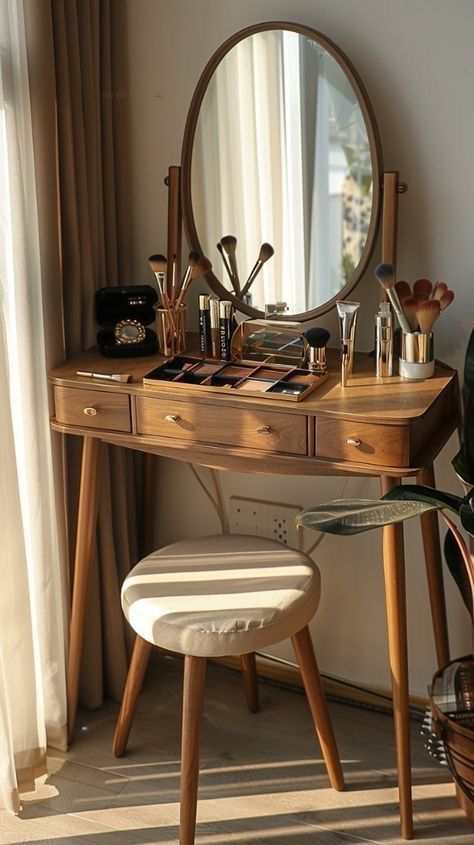
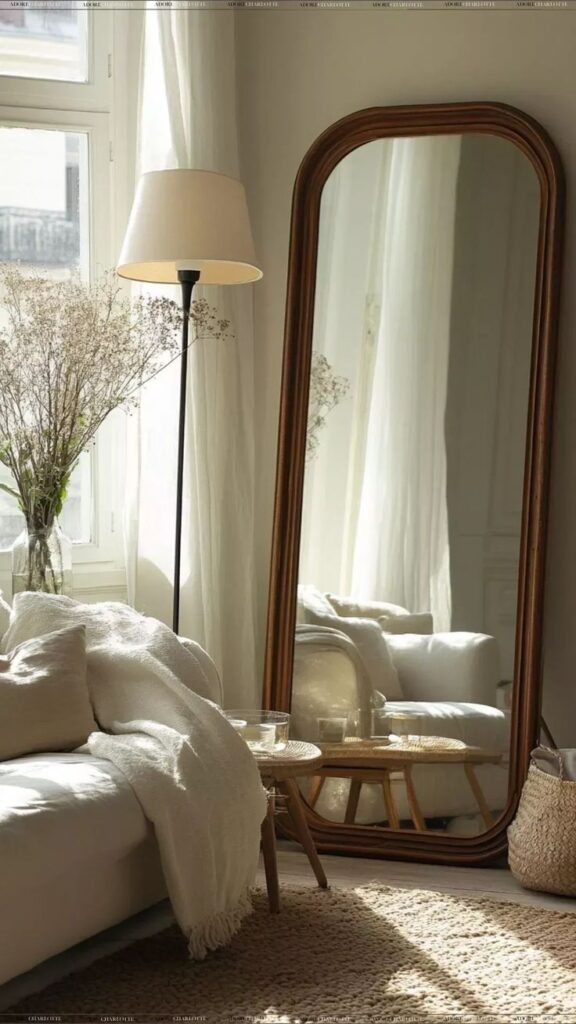
For centuries, mirrors have captivated humanity. Initially luxury items, they evolved into everyday necessities. But their role in interior design goes far beyond utility. Decorative mirrors are masters of illusion and atmosphere. They trick the eye, play with light, and add depth to any setting.
Imagine a compact apartment feeling twice its size thanks to a strategically placed, oversized mirror. Or a dark hallway suddenly bathed in soft, diffused light, all because a mirror caught and amplified a distant window’s glow. This isn’t just wishful thinking; it’s the tangible impact of understanding and utilizing these reflective beauties. They are key players in creating dynamic, inviting, and visually engaging interiors.
Why Decorative Mirrors Are Game-Changers for Your Home
Adding decorative mirrors to your home offers a wealth of benefits that go far beyond their primary function. They’re versatile, stylish, and incredibly effective at enhancing a space. However, like any design element, they come with a few considerations.
| Pros | Cons |
|---|---|
| – Expand Space: Creates an illusion of depth, making smaller rooms feel larger. | – Placement is Key: Incorrect placement can reflect clutter or create awkward views. |
| – Boost Light: Reflects natural and artificial light, brightening dark areas. | – Fragility: Mirrors are glass and can break, posing a safety risk if not secured. |
| – Add Style & Art: Acts as a focal point or a piece of wall art, enhancing aesthetics. | – Maintenance: Requires regular cleaning to stay smudge-free and reflective. |
| – Versatile Design: Available in endless shapes, sizes, and frames to match any decor. | – Weight: Large mirrors can be heavy, requiring robust wall anchors and careful installation. |
| – Conceal Imperfections: Can draw attention away from less desirable features in a room. | – Cost: High-quality, large, or intricately framed mirrors can be expensive. |
Choosing Your Perfect Mirror: Style, Shape, Size, and Frame

Selecting the right decorative mirror is like choosing the perfect piece of jewelry for an outfit – it needs to complement and enhance. There’s a lot more to it than just picking one you like; careful consideration of style, shape, size, and frame can make all the difference.
The Art of the Frame
The frame is arguably the most defining characteristic of a decorative mirror, often dictating its overall style.
- Ornate & Gilded: These frames, often gold or silver, evoke a sense of classic elegance and luxury. Perfect for traditional, opulent, or even eclectic spaces that need a touch of grandeur. Think antique Venetian mirrors or Baroque styles.
- Minimalist & Sleek: Unframed mirrors, or those with very thin, simple metal (black, brass, chrome) or wood frames, fit perfectly into modern, industrial, or minimalist aesthetic designs. They allow the reflection and the space itself to be the focus.
- Rustic & Natural: Frames made from reclaimed wood, rattan, bamboo, or even distressed metal bring warmth and an organic touch. Ideal for farmhouse, bohemian, or cottagecore aesthetics.
- Industrial & Geometric: Metal frames with clean lines, often in black or dark gray, or mirrors composed of multiple geometric panels, suit industrial, contemporary, or even urban-chic decor.
- Artisan & Unique: Some mirrors boast truly unique frames, perhaps hand-carved, mosaic, or made from unexpected materials. These become unique handmade decor pieces that add authenticity and character to your space.
The Power of Shape
While rectangular and square mirrors are classics, don’t shy away from exploring other shapes.
- Round & Oval: These soft, organic shapes can soften harsh lines in a room, add a touch of whimsy, or create a sense of balance. They’re particularly effective in entryways or bathrooms.
- Arched: Arched mirrors mimic the architectural grandeur of windows or doorways, adding height and a classic, elegant feel.
- Geometric & Abstract: Hexagonal, octagonal, or even irregular abstract shapes can create a modern, artistic focal point and introduce a playful element.
- Sunburst & Starburst: These mirrors, often round with radiating spokes, are true statement pieces, adding a dramatic, sculptural element.
Sizing Up Your Space
The size of your mirror should be proportionate to the wall it’s on and the furniture it’s interacting with.
- Oversized/Floor-Length: These make a dramatic impact, especially leaned against a wall. They’re fantastic for expanding small rooms or adding a touch of drama to large ones. A full-length mirror can also be incredibly useful in a dressing area.
- Large Wall-Mounted: A significant mirror above a sofa, console table, or fireplace mantel becomes an instant focal point, anchoring the space.
- Medium Accent Mirrors: Used in pairs, as part of a gallery wall, or to fill smaller wall spaces, these add decorative flair without overwhelming.
- Small Decorative Clusters: Grouping several small, often differently framed mirrors, can create an interesting visual texture and serve as an artistic display.
Mastering Mirror Placement for Maximum Impact

Where you place your decorative mirror is just as important as the mirror itself. Strategic placement can unlock its full potential, transforming your home.
Amplifying Light and Space
This is perhaps the most well-known magic trick of mirrors.
- Opposite a Window: Placing a mirror directly across from a window is a classic move. It bounces natural light deep into the room, making the space feel brighter and more open. It also reflects the outdoor view, bringing a piece of nature indoors.
- Behind Light Sources: Position a mirror behind a lamp or sconce to amplify its glow. This can create a softer, more diffused light, adding warmth and ambiance to a room, especially in a cozy bedroom.
- In Dark Corners/Hallways: A mirror can be a lifesaver in areas lacking natural light, making them feel less cramped and more inviting.
Creating Focal Points and Anchoring Furniture
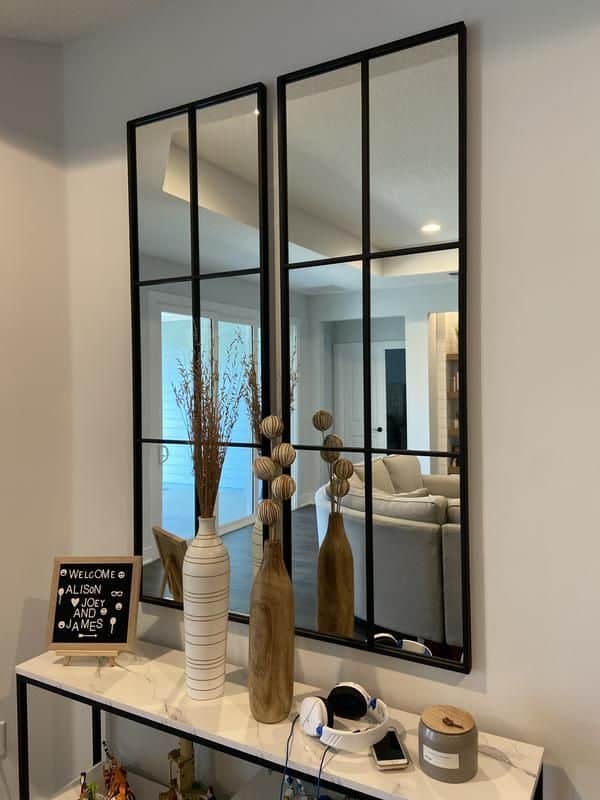
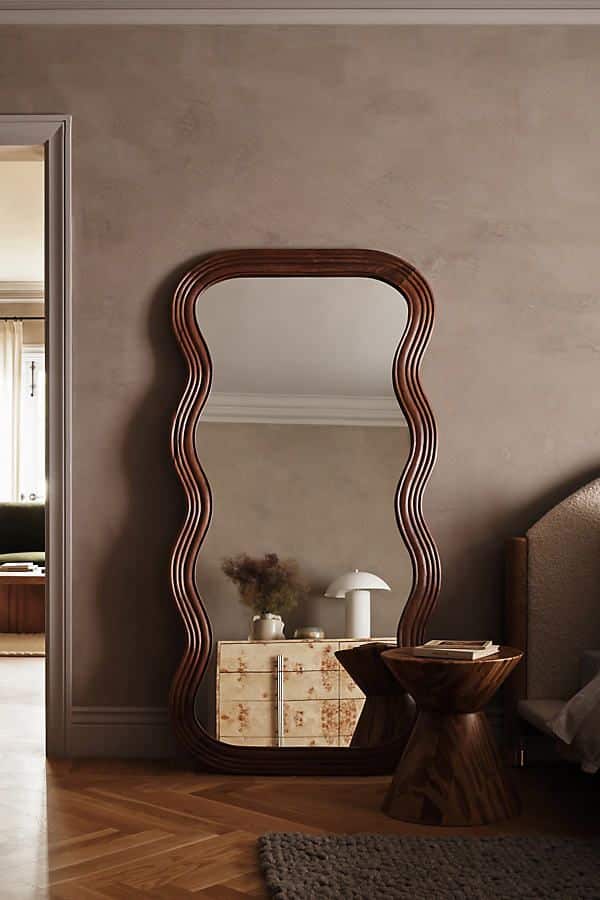
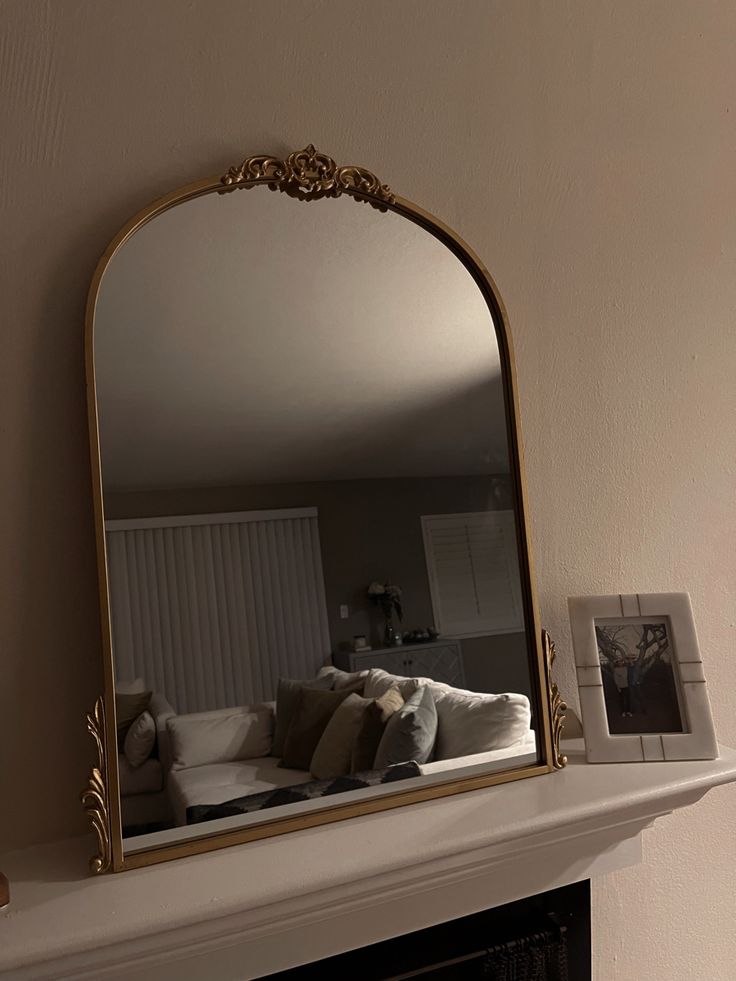
A well-placed mirror can draw the eye and ground a design.
- Above a Fireplace Mantel: This is a traditional and highly effective spot. A large, beautiful mirror instantly becomes the room’s centerpiece, especially if it reflects something interesting on the opposite wall.
- Above a Console Table: In an entryway or living room, a mirror above a console table creates an inviting vignette. Add some greenery, books, or unique toy collectibles to complete the look.
- Behind a Sofa or Bed: A large mirror or a series of smaller ones behind a sofa or headboard can act as a sophisticated alternative to artwork, adding depth and visual interest without competing with other decor.
- Gallery Walls: Integrate mirrors into a gallery wall alongside framed art and photos. This adds reflective texture and breaks up the composition, making the arrangement more dynamic.
Considerations for Mirror Placement
- What it Reflects: Always consider what your mirror will reflect. Aim for pleasing views like windows, artwork, or interesting architectural features. Avoid reflecting clutter, blank walls, or unflattering angles. This is where 10 tidy room tips can come in handy, ensuring your reflection is always of a beautiful, organized space.
- Height: For wall-mounted mirrors, the center of the mirror should ideally be at eye level (for an average height person) when standing. If it’s over a piece of furniture, leave a comfortable gap between the bottom of the mirror and the top of the furniture, typically 6-8 inches.
- Safety: Always secure heavy mirrors properly with appropriate wall anchors. If leaning a large mirror, ensure it’s stable and unlikely to tip over.
Mirrors for Every Room: Tailoring Your Reflection
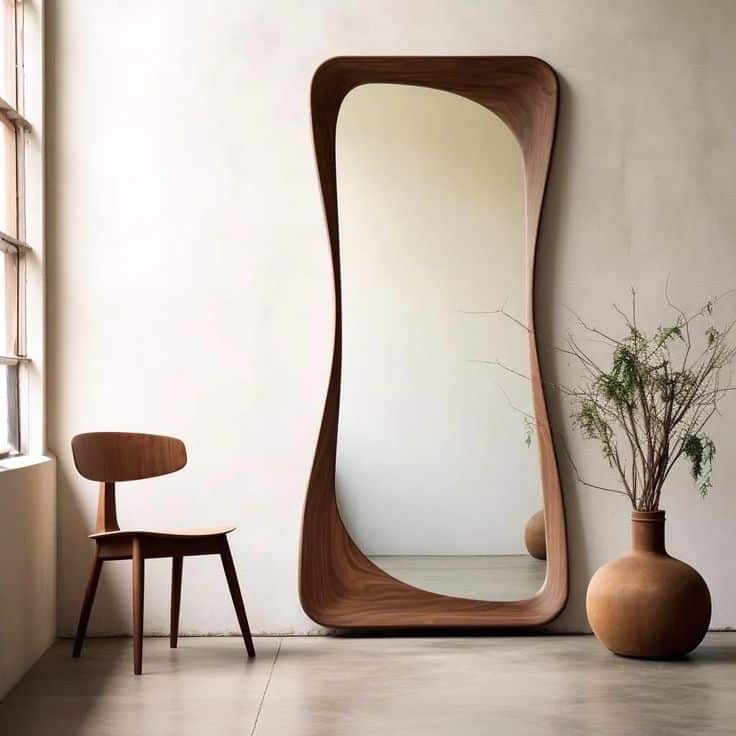
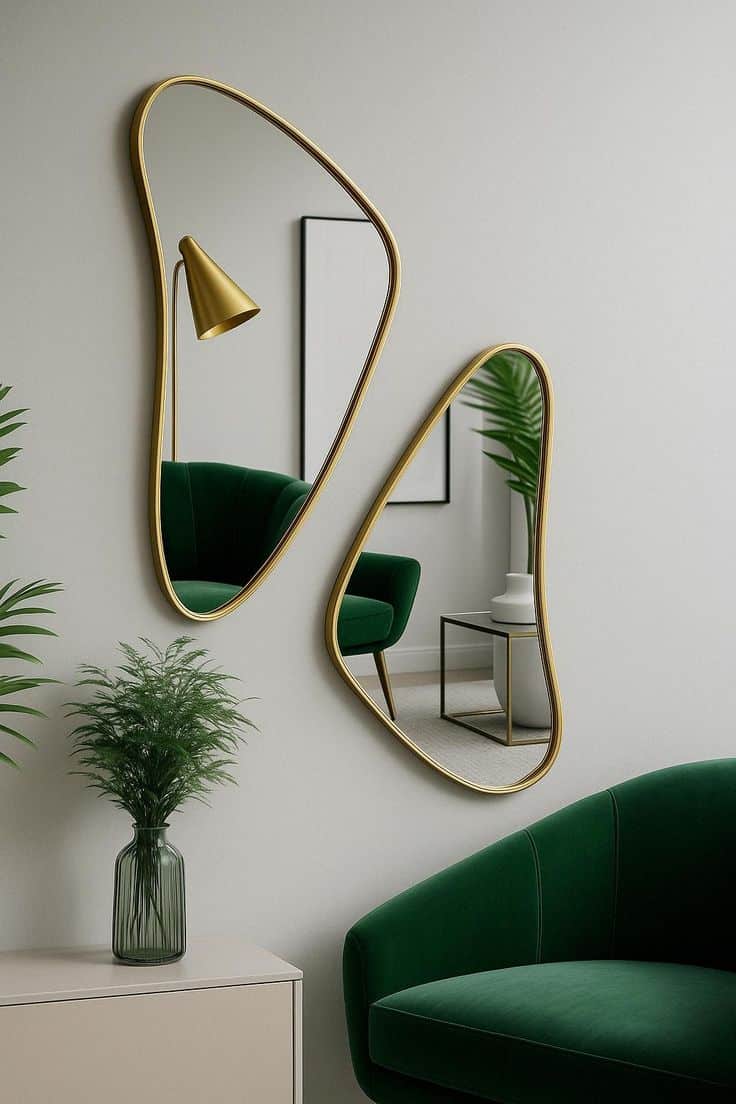
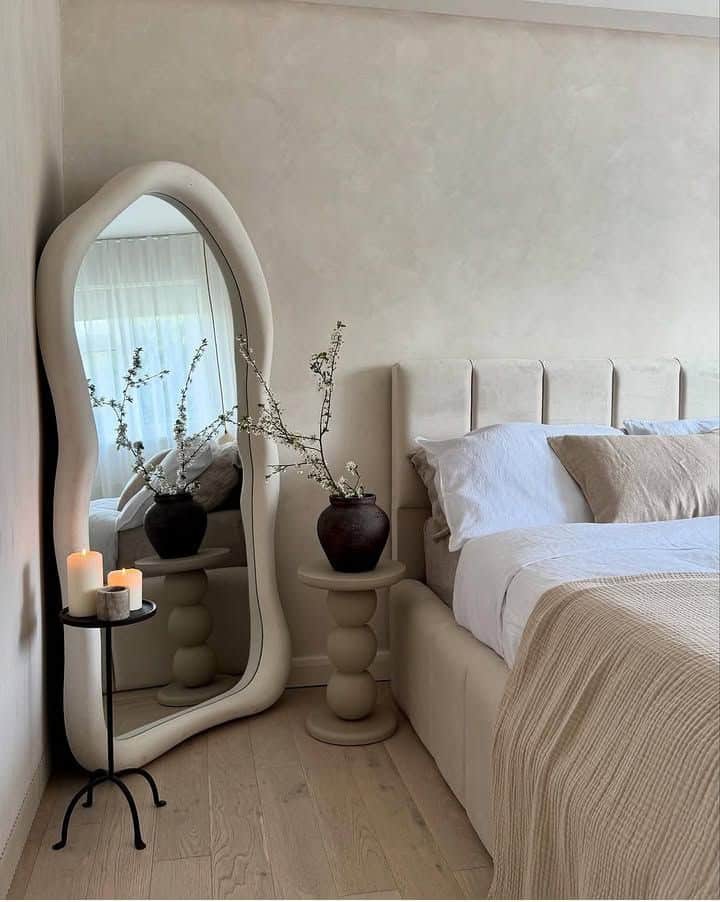
Each room in your home presents a unique opportunity for decorative mirrors to shine.
The Grand Entrance: Entryway Mirrors
Your entryway is the first impression of your home. A mirror here is both practical and stylish.
- Functionality: It’s perfect for a last-minute check before heading out the door.
- Welcoming Effect: A mirror opposite the front door can make a small entryway feel more expansive and welcoming, reflecting light and views from outside.
- Style Statement: A striking frame or an interesting shape can immediately set the tone for your home’s aesthetic.
Living Room Luminosity: Enhancing Your Main Space
The living room is where most large statement mirrors find their home.
- Over the Sofa or Fireplace: As mentioned, these are prime spots for a large, captivating mirror.
- Gallery Wall Inclusion: A mix of mirrors and art can create a dynamic, curated look.
- Leaner Mirrors: A large floor-length mirror leaned against a wall can add a casual, yet chic vibe, especially in more contemporary or bohemian spaces.
Bedroom Bliss: Reflecting Serenity

Mirrors in the bedroom serve both functional and aesthetic purposes, contributing to a tranquil and inviting atmosphere.
- Dressing Area: A full-length mirror is a must-have for getting ready.
- Above a Dresser: A medium-sized mirror above a dresser can complete a vanity setup.
- Behind the Bed: Consider a wide, horizontal mirror or a triptych of mirrors behind your headboard for a unique focal point that adds depth without overwhelming. This can contribute to a truly luxury sleep experience.
Dining Room Drama: Elevating Gatherings
Mirrors in the dining room can elevate the space, making it feel more formal and elegant.
- Opposite a Chandelier: Reflecting a beautiful light fixture can double its sparkle and impact.
- Behind a Buffet or Sideboard: A large mirror can frame a serving area, making it feel more substantial.
- Mirrored Accent Wall: For a truly dramatic effect, consider an entire wall or a large panel of antiqued mirror, adding texture and subtle reflection.
Bathroom Brilliance: Beyond the Vanity
While primarily functional in bathrooms, mirrors can still be decorative powerhouses.
- Stylish Vanity Mirrors: Move beyond basic medicine cabinets. Opt for a mirror with a decorative frame, an interesting shape (like an oval or arch), or backlighting for a spa-like feel.
- Opposite a Shower: If space allows, a decorative mirror on an opposing wall can make the bathroom feel much larger and brighter.
Design Styles and Mirror Pairings: Finding Your Aesthetic Match
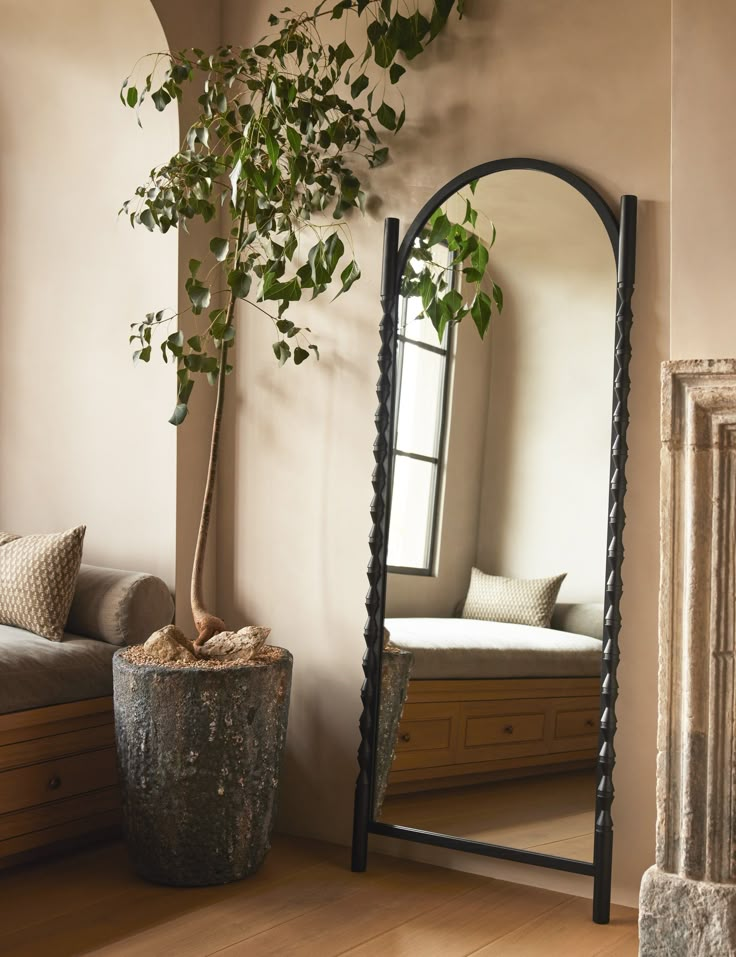
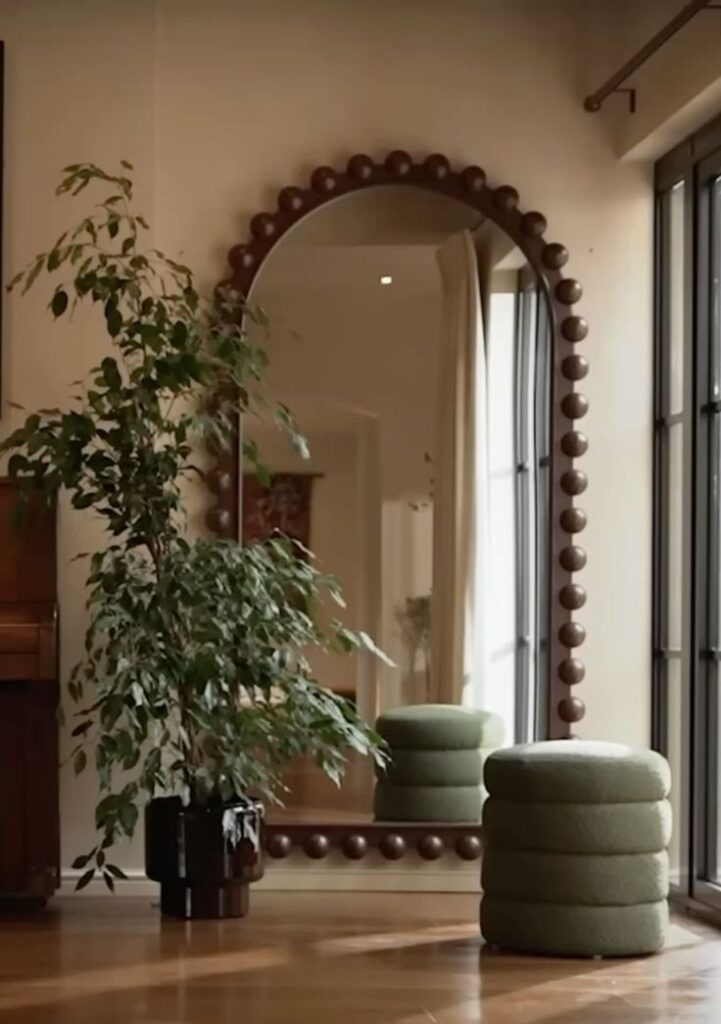
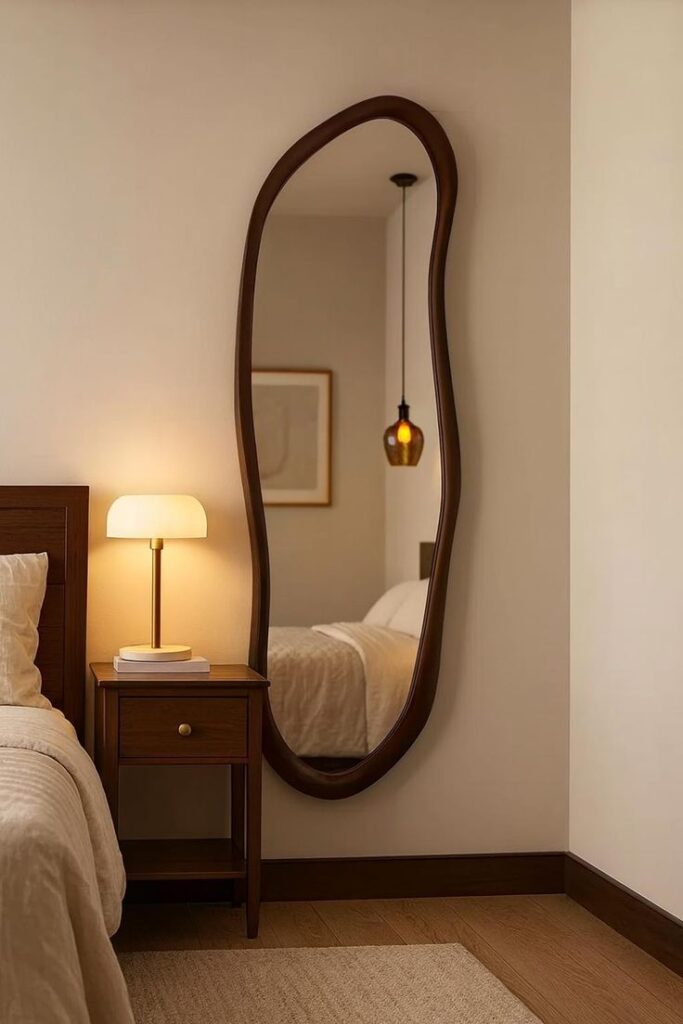
The beauty of decorative mirrors lies in their adaptability. They can seamlessly integrate into, and even define, various interior design styles.
Modern & Minimalist
- Mirrors: Unframed, sleek metal frames (black, chrome, brass), geometric shapes, or very thin, barely-there frames. Often large and simple, prioritizing function and clean lines.
- Impact: Adds sophistication and visual expansion without clutter. Complements the sparse, intentional aesthetic.
Bohemian & Eclectic
- Mirrors: Rattan, bamboo, macrame-framed, sunburst, or carved wood mirrors. Often mixed and matched in size and frame, or antique pieces with intricate details.
- Impact: Introduces texture, global flair, and an artisanal touch. Contributes to a layered, collected feel.
Farmhouse & Rustic
- Mirrors: Reclaimed wood frames, distressed finishes, antique mercury glass, or simple black metal frames. Often large and sturdy.
- Impact: Brings warmth, history, and a touch of rugged charm. Reflects the natural materials and cozy ambiance of the style.
Traditional & Glamorous
- Mirrors: Ornate gilded frames, Venetian mirrors, beveled edges, intricate carvings. Often grand in scale.
- Impact: Creates a sense of luxury, formality, and timeless elegance. Enhances the opulent details and rich textures typical of these styles. For an elegant decoration idea for a luxury apartment, an ornate gold-framed mirror is a must.
Industrial & Urban Loft
- Mirrors: Metal frames (steel, iron, black), factory-style panes, or large, raw framed pieces. Often geometric and robust.
- Impact: Reinforces the raw, utilitarian aesthetic, adding an element of polished grit and expanding the often open-plan spaces.
Innovative Uses for Mirrors: Beyond the Wall

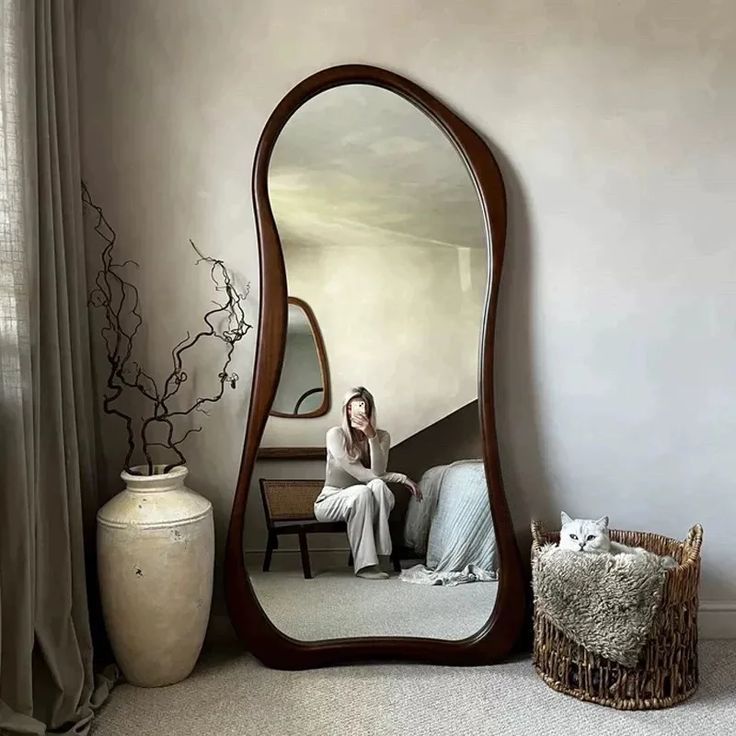

While wall-mounted mirrors are the most common, don’t limit your imagination! Mirrors can be incorporated in surprising and delightful ways.
- Mirrored Furniture: Coffee tables, side tables, dressers, or even entire cabinet fronts can be clad in mirrored panels. This adds glamour, reflects light, and makes furniture appear lighter and less bulky.
- Mirrored Backsplashes: In a kitchen or bar area, a mirrored backsplash can add depth, sparkle, and reflect light, making the space feel more open and sophisticated.
- Mirrored Trays: Use mirrored trays on coffee tables or dressers to corral smaller decorative items, instantly elevating their presentation and adding a touch of shimmer.
- Outdoor Mirrors: Yes, you can use mirrors outdoors! Weather-resistant mirrors can be placed in gardens or on patios to reflect greenery, create illusions of extra space, or simply add an unexpected, whimsical element to your outdoor oasis. Just ensure they are properly secured and don’t create fire hazards by focusing direct sunlight.
Tips for Mirror Maintenance and Care

To keep your decorative mirrors looking their best and performing their magic, a little care goes a long way.
- Regular Cleaning: Dust mirrors frequently with a microfiber cloth. For smudges, use a glass cleaner or a solution of water and vinegar (50/50 mix) sprayed onto a cloth, not directly onto the mirror. Wipe in a consistent direction (e.g., top to bottom) to avoid streaks.
- Frame Care: Different frames require different care. Wood frames might need occasional polishing, metal frames can be wiped with a damp cloth, and ornate frames might need gentle dusting with a soft brush.
- Avoid Harsh Chemicals: Strong abrasive cleaners can damage mirror coatings or frames. Stick to gentle glass cleaners.
- Handle with Care: When moving or installing, always handle mirrors by their frames, not the glass, to avoid fingerprints and potential damage.
- Moisture Control: In high-humidity areas like bathrooms, ensure good ventilation to prevent moisture from seeping behind the mirror and causing “black spots” or damage to the silvering over time.
The Enduring Allure of Reflective Beauty
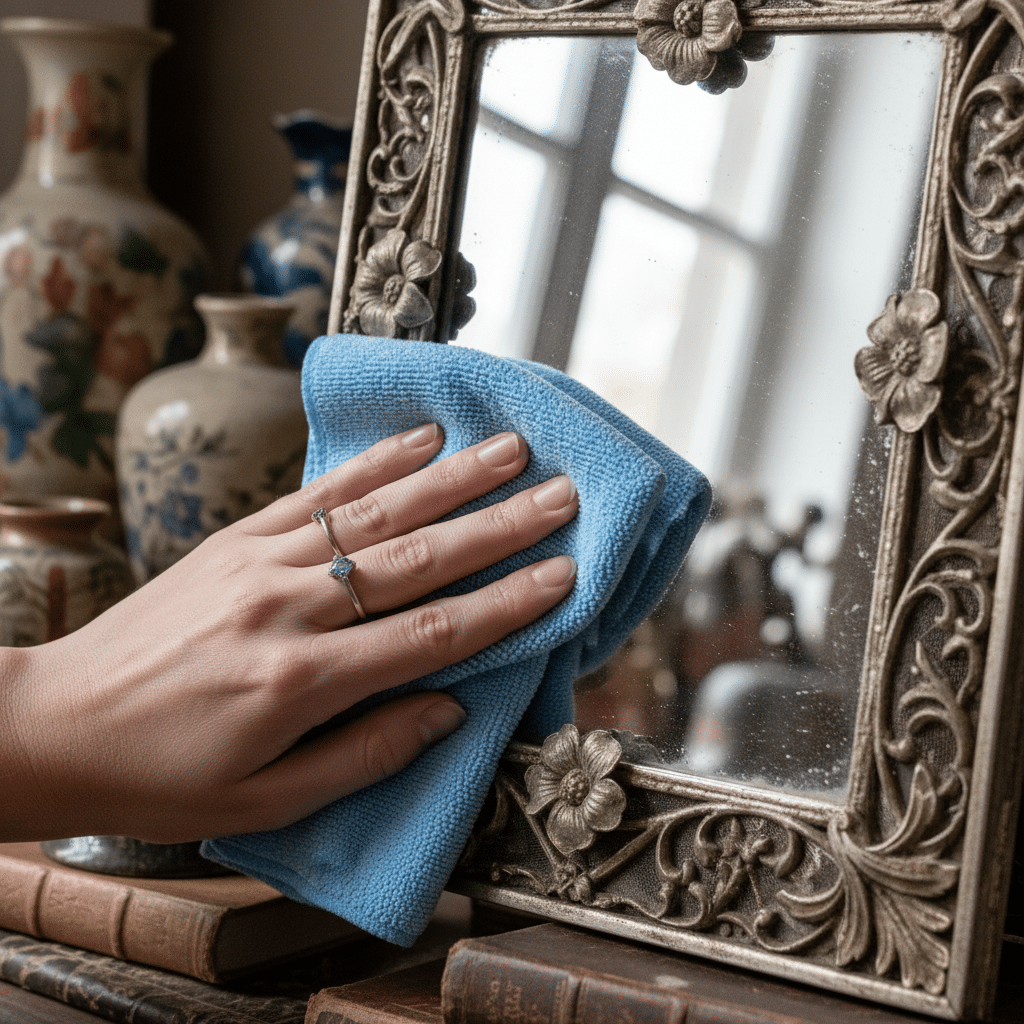
Decorative mirrors are far more than just functional objects; they are dynamic elements that bring light, depth, and personality into any space. From the grand, gilded statements that harken back to ancient palaces to the sleek, minimalist designs that define modern living, there’s a mirror for every taste and every corner of your home.
By thoughtfully considering the style, shape, size, and most importantly, the placement of your mirrors, you unlock their incredible potential. They can make small rooms feel expansive, dark corners brighten, and ordinary walls burst with artistic flair. They reflect not just your surroundings, but the care and creativity you pour into making your house a home. So, go ahead, explore the magic, and let your home truly reflect your unique style.
Ready to transform your space with the captivating power of decorative mirrors? Start by identifying a spot in your home that could use a touch of light, depth, or a bold style statement. Research different styles, measure your space, and confidently choose a mirror that speaks to you. The reflection you see won’t just be your own; it will be a reflection of your impeccable taste and clever design choices.
How does the placement of a mirror affect its effectiveness in interior design?
Strategic placement of mirrors can amplify light, make spaces feel larger, create focal points, and enhance visual balance; placing them opposite windows, behind light sources, or above key furniture can maximize their decorative and functional impact.
What should be considered when selecting a decorative mirror for a specific room?
Consider the mirror’s style, shape, size, frame design, and placement to ensure it complements the room’s decor, enhances natural light, and fits proportionally within the space for optimal aesthetic and functional results.
What are some popular mirror styles and how do they match different decor aesthetics?
Popular styles include ornate gilded frames for traditional or glamorous spaces; sleek, unframed designs for modern minimalism; rustic wood frames for farmhouse decor; and artisan or geometric shapes for eclectic or contemporary settings, each reflecting distinct aesthetic qualities.
What maintenance tips ensure the longevity and appearance of decorative mirrors?
Regular cleaning with a microfiber cloth and glass cleaner, careful handling during installation, appropriate frame maintenance, and ensuring good humidity control—especially in bathrooms—are essential to keep mirrors looking pristine and functioning effectively over time.
- 23shares
- Facebook0
- Pinterest23
- Twitter0
